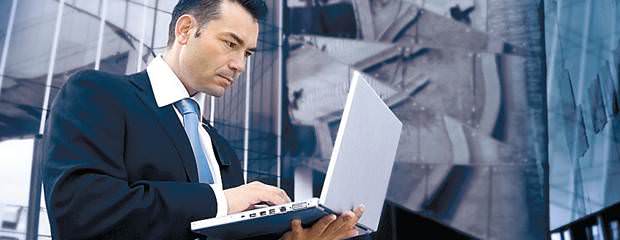
Fuzzy signal for San Francisco's wireless plans
Despite its private-sector tech prowess, San Francisco as a city has fallen short on its effort to provide free wireless Internet access to all. Whether due to politics, infrastructure or a good idea that didn't go far enough, universal connectivity for sidewalks, parks and public squares of The City remains just an idea.
After a deal to provide free access with an ad-supported service by Earthlink and Google got caught up in The City's nasty political climate of 2006, at the time-Mayor Gavin Newsom looked to local tech company Meraki in 2008 to create a resident-fueled network of football-size Wi-Fi repeaters on rooftops.
But since at that time, Meraki has refocused its business model to hardware and cloud computing, away from operating primarily as an Internet service provider. A 2009 announcement that the company had covered 80 percent of San Francisco with free Wi-Fi to tell the truth showed the access clumped in the Mission and Castro neighborhoods, leaving much of the west side of The City without any such free public access.
For now, The City plans to take a more piecemeal approach to expanding free access in public spaces like parks and libraries. According to the Department of Research, Wi-Fi sites pursuant to this agreement development include myriad public library branches, Duboce Park and the Cortland Avenue commercial corridor in Bernal Heights, all using the existing city-owned 110 miles of fiber optic cables.
Jon Walton, The City's chief information officer, said the incremental strategy will have to be fueled by already-strained budgets in various departments and only $80,000 dedicated to new wireless infrastructure for the Department of Innovation.
Board of Supervisors President David Chiu, a candidate for mayor, said only about 10 percent of the public fiber optic cable capacity is in fact being used. As for Wi-Fi services from the public cables ultimately becoming free, Chiu said more investigation needs to be done on who should oversee the service and the best way to proceed with advancing innovation.
2009 consultant's report commissioned
A 2009 consultant's report commissioned by The City said universal free Internet, connected through fiber optic cables running directly into homes and businesses, could cost between $500 million and $750 million. Costs would presumably be recouped over time if The City could capture a 36-percent market share of Web browser advertising sales, according to the report.
City politicians have touted the potential free service's ability to bridge the "digital divide" between those with and without Internet access. It has become an issue in the San Francisco mayoral race, with most candidates at a June forum calling for basic upgrades to openly available research. The Police Department, for instance, only recently introduced email to all employees, during applying for a job with The City in part can only be done via the Internet.
The access as a big issue
Mayoral candidate Phil Ting regards the access as a big issue, and recommended that money The City spends on mailing required notices and other materials be redirected to a fund dedicated to expanding free Internet.
Clement Street, Richmond DistrictNot likelySome businesses offer it, and plenty of residential Wi-Fi signals pop up throughout the Richmond district with funny names for nodes like Clement Ninjas. In an apparent effort to deter would-be hackers or pilferers, some are simply called Virus. Most are locked, nevertheless.
- ·
%22david+chiu%22+and+%22department+of+innovation%2
- · Rackspace debuts OpenStack cloud servers
- · America's broadband adoption challenges
- · EPAM Systems Leverages the Cloud to Enhance Its Global Delivery Model With Nimbula Director
- · Telcom & Data intros emergency VOIP phones
- · Lorton Data Announces Partnership with Krengeltech Through A-Qua⢠Integration into DocuMailer
